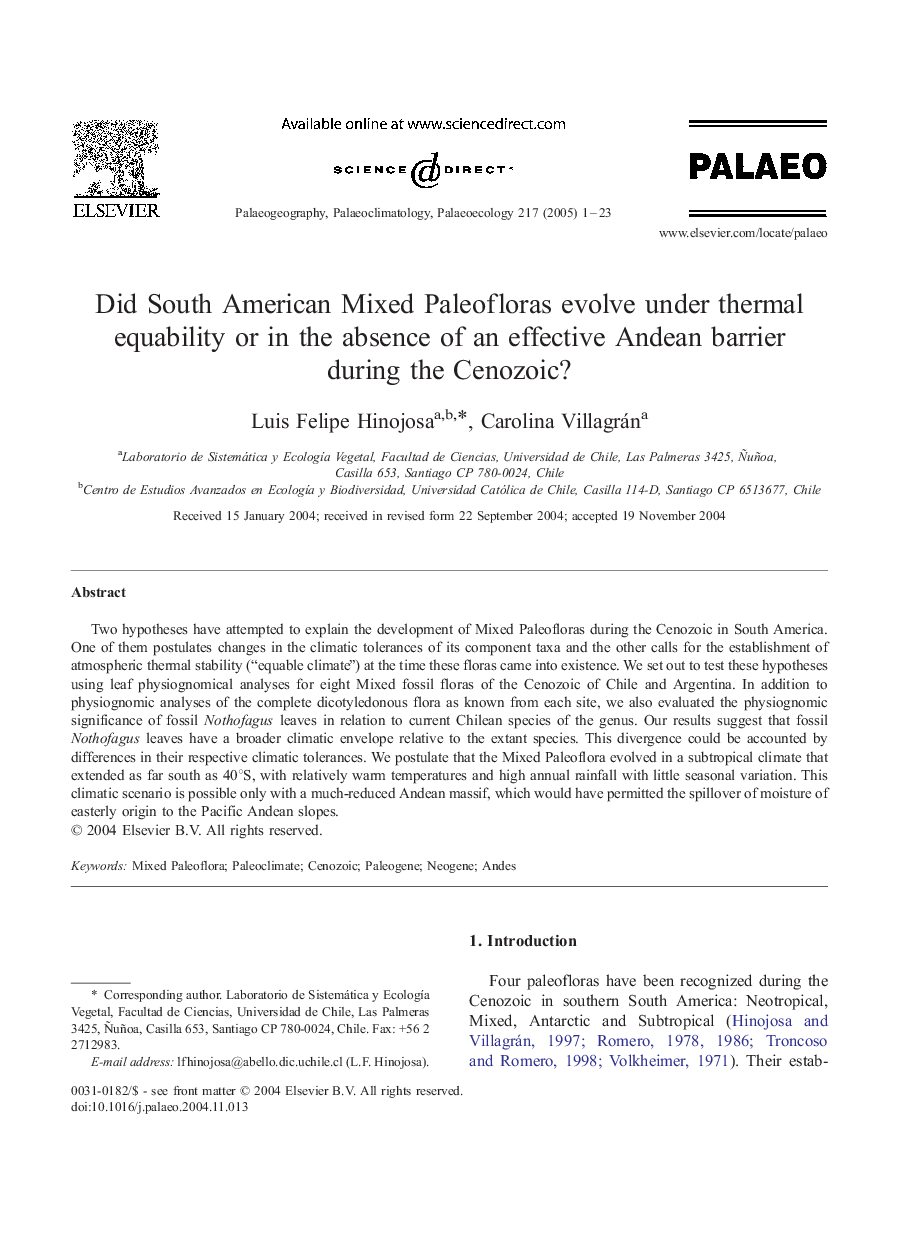| کد مقاله | کد نشریه | سال انتشار | مقاله انگلیسی | نسخه تمام متن |
|---|---|---|---|---|
| 9463078 | 1622403 | 2005 | 23 صفحه PDF | دانلود رایگان |
عنوان انگلیسی مقاله ISI
Did South American Mixed Paleofloras evolve under thermal equability or in the absence of an effective Andean barrier during the Cenozoic?
دانلود مقاله + سفارش ترجمه
دانلود مقاله ISI انگلیسی
رایگان برای ایرانیان
کلمات کلیدی
موضوعات مرتبط
مهندسی و علوم پایه
علوم زمین و سیارات
فرآیندهای سطح زمین
پیش نمایش صفحه اول مقاله

چکیده انگلیسی
Two hypotheses have attempted to explain the development of Mixed Paleofloras during the Cenozoic in South America. One of them postulates changes in the climatic tolerances of its component taxa and the other calls for the establishment of atmospheric thermal stability (“equable climate”) at the time these floras came into existence. We set out to test these hypotheses using leaf physiognomical analyses for eight Mixed fossil floras of the Cenozoic of Chile and Argentina. In addition to physiognomic analyses of the complete dicotyledonous flora as known from each site, we also evaluated the physiognomic significance of fossil Nothofagus leaves in relation to current Chilean species of the genus. Our results suggest that fossil Nothofagus leaves have a broader climatic envelope relative to the extant species. This divergence could be accounted by differences in their respective climatic tolerances. We postulate that the Mixed Paleoflora evolved in a subtropical climate that extended as far south as 40°S, with relatively warm temperatures and high annual rainfall with little seasonal variation. This climatic scenario is possible only with a much-reduced Andean massif, which would have permitted the spillover of moisture of easterly origin to the Pacific Andean slopes.
ناشر
Database: Elsevier - ScienceDirect (ساینس دایرکت)
Journal: Palaeogeography, Palaeoclimatology, Palaeoecology - Volume 217, Issues 1â2, 11 February 2005, Pages 1-23
Journal: Palaeogeography, Palaeoclimatology, Palaeoecology - Volume 217, Issues 1â2, 11 February 2005, Pages 1-23
نویسندگان
Luis Felipe Hinojosa, Carolina Villagrán,